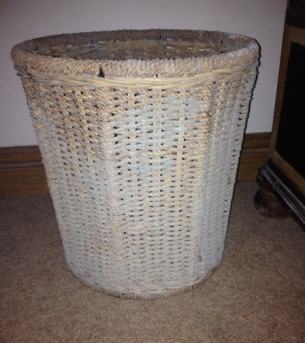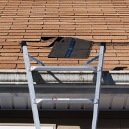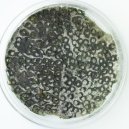Find a pre-screened local mold removal specialist Free Estimate
Find a Mold Specialist Now
Click or Call, Toll-Free 24/7
Botrytis Mold in the Home
Where is botrytis mold found in the home? What health risks are associated with this type of mold and what is the best way to remove it from your home? First you need to understand that botrytis mold is an extremely fast growing mold. It appears white at first then turns gray in color as its spores develop. This spore development makes the mold appear as a "fuzzy" growth. This mold is found everywhere in nature and usually enters your home on plants, fruits, or vegetables that you buy.
Botrytis is considered to be a hardy type of mold and is able to grow on a variety of surfaces. The mold spores can survive, by remaining in a dormant state, until sufficient moisture is present for the mold's optimal growth conditions to be reached. Because the mold most often enters your home on fruits and vegetables that you have purchased, your refrigerator is one of the more common places it can be found. This mold loves moisture and limited air circulation, conditions that can be found when damp or wet produce is placed into a darkened refrigerator. It also likes produce that is approaching over-ripeness or decay.
Health Issues Resulting From Botrytis Mold
Botrytis is highly allergenic. Sensitive or allergic people may experience hay fever-like symptoms such as sneezing, runny nose, itchy/watery eyes and sore throat. It may also produce asthma symtoms like wheezing and coughing. However, there are many more health problems caused by exposure to this particular indoor mold.
Another health risk that this mold can contribute to is the development of an ocular condition known as keratomycosis. This is a fungal infection to the cornea in the eye. Symptoms of this condition may include eye pain, light sensitivity, redness and vision problems. Prompt, professional treatment is required to avoid permanent vision loss.
Hypersensitivity pneumonitis is another health condition attributed to exposure to botrytis mold. This health condition mimics the flu and symptoms can include high fevers, chills, muscle pain and fatigue, coughing, and shortness of breath. Because this condition affects the lungs, if left untreated for an extended period, it can result in damage to the body's extremities, the fingers and toes, much like frostbite would cause.
Removing Botrytis Mold from Your Home
Because it’s highly allergenic and spreads so easily, botrytis mold should to be removed from your home immediately upon its discovery. Dispose of infected produce or plants and clean the area where the produce or plants were stored or kept. After the affected items are removed, HEPA vacuum the surfaces and areas where the mold was seen. A HEPA vacuum should be used instead of a regular vacuum cleaner. A normal household vacuum is not designed to capture micro-sized particles and mold spores, where a HEPA vacuum will. Follow the vacuuming with a damp wipe using a mold removal product such as Concrobium Mold Control.
If any of your indoor plants are infected, they should be disposed of. If they are expensive plants, you can try to remove dead or dying plant leaves and tissue and dispose of them in a sealed bag. However, because the mold is sometimes microscopic in size, you can’t see all the mold and you may miss some. The missed mold can then redevelop, re-infect your plants, and cause renewed health issues for residents of your home.
Be extremely vigilant and cautious when it comes to mold. In addition to health risks, mold growth can cause major damage to your home, infecting wood, drywall, ceilings, carpets and more. Left untreated, the mold can eventually affect the structural integrity of your home. For this reason, all molds need to be removed promptly from your home to avoid more costly and extensive remediation and restoration work.
Preventing Mold Growth
Mold thrives in dark, humid and wet environments. Avoid plant mold growth of any kind by not overwatering and ensuring that your plants have adequate drainage. Make sure there is adequate air circulation in the areas of your home where you have plants growing.
When you bring fruits and vegetables home from the store, you should always rinse them before placing them in your refrigerator. Also take care to always dry these items as much as possible before storing them. This will reduce the amount of free moisture that they may have on them.
Moisture is the number one cause of mold growth in homes. It’s important to prevent moisture from reaching levels that promote mold growth by taking some simple, preventative steps. Always clean up water spills immediately. Repair plumbing leaks and drips promptly. Make sure your bathrooms and kitchen are vented to the outside so steam or cooking fumes don’t build up. Avoid pools of standing water in basements or crawlspaces. Finally, use a dehumidifier or air conditioner to keep indoor humidity levels no higher than 50 percent.
Should You Seek Professional Help?
If you find mold growing in your home, in certain circumstances you may choose to perform the mold removal yourself. Surface mold or mold on a small area (10 square feet or less) can usually be handled on your own. Mold removal must be undertaken with proper precautions to prevent spreading or inhaling the mold spores. Personal protective equipment should include eye goggles, gloves, and a N-95 rated mask or respirator. Plastic sheeting, duct tape and a HEPA vacuum are among the tools you’ll need to have available to keep the mold contained during the removal process. Establishing negative air pressure inside of the containment areas will help to keep the mold from spreading to unaffected areas of your home. You should also remove and replace any porous materials that have been affected by the mold. Be sure to bag all affected materials that are removed before removing them from inside the contained areas.
If the area of mold growth is larger than 10 square feet, the U.S. Environmental Protection Agency (EPA) recommends that a professional mold remediation company perform the work. The extent of the actual mold contamination can be hard to determine, especially when it’s growing in a dark, damp area like a basement, an attic, or inside wall cavities. When you do find mold you should consider the 80-20 rule. It is highly probable that you will only be able to see 20 percent of the mold that is present. The remaining 80 percent will be hidden. A professional will know where to look, how to find the mold, and how to safely remove it. You should also seek professional help if you suspect there is mold in your home’s HVAC system or ductwork, or especially if you have allergies or any other mold-related health problems. You will also want to consult a professional if your water or mold damage is the result of flooding or a sewage backup condition.
If you suspect you have mold in your home, help is just one click away. You can get a free home inspection and consultation from a mold remediation professional in your area. This pre-qualified mold specialist will be able to identify any mold problems that exist in your home, and let you know what needs to be done to safely and efficiently remove the mold. They will provide you with an estimate, in writing, that will explain in detail all the work that should be done.
Return From Botrytis Mold To Our Types Of Mold Page
Free Home Inspection By A Mold Removal Specialist
Search This Website
 Botrytis on Strawberries
Botrytis on StrawberriesRecent Articles
-
See Our 5 Recommended Mold Removal Companies in Covington, KY
Apr 16, 25 12:59 PM
-
See Our 5 Recommended Mold Removal Companies in Wheaton, IL
Jun 20, 24 10:33 AM
-
See Our 5 Recommended Mold Removal Companies in Aberdeen, SD
Oct 08, 21 04:05 PM





